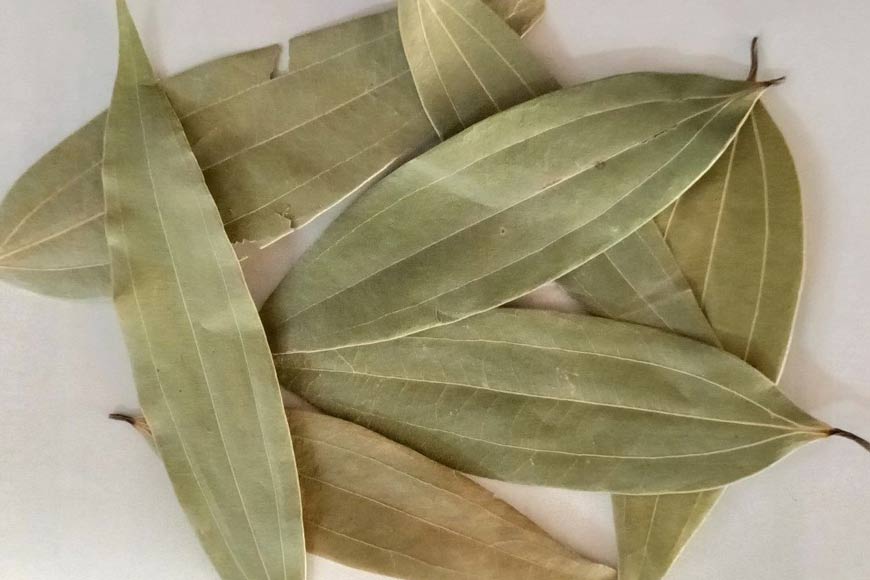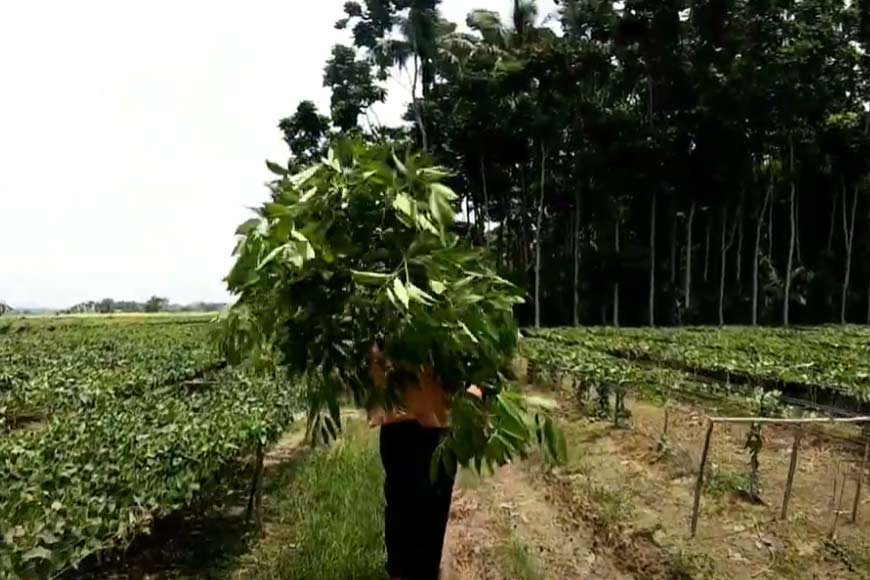Bay Leaf Cultivation: Fueling Bengal’s growth, strengthening women’s independence -GetBengal Story

The very ingredient that builds the flavour of biryani, and yet the one we push aside while eating it, is none other than the humble bay leaf, or tejpatta! This aromatic leaf is now shaping the economy of Bengal’s North Dinajpur by creating a massive 400 crore industry!
Even two decades ago, there was no bay leaf cultivation until Sukumar Barman, a farmer from North Lakhipur village in Raiganj block, decided to move away from conventional farming. He started the cultivation back in 2007, taking a risk by ignoring the cultivation of common seasonal crops. He currently owns 650 bay leaf trees. In total, the trees produce 80 to 90 quintals (8,000 to 9,000 kgs) of leaves annually, and he earns about Rs. 5 lakh every three years.
Consequently, other farmers from areas like Raiganj, Hemtabad, Kaliagunj, and Islampur in North Dinajpur, and even from Kushmundi in South Dinajpur, are following Sukura Barma. As a result, they are growing rapidly economically and industrially with this low-maintenance cultivation.

The region is a perfect place to cultivate the leaves, and they also need very minimal maintenance in comparison to other crops. The trees do not take more than 3 years to start producing leaves. After maturing, each tree can produce 15 to 20 kg of leaves annually and continue to produce for the next 25 years.
Interestingly, both men and women are actively contributing to this bay leaf cultivation industry. Men are involved in cultivation and harvesting, while women play a crucial role in the stage of sorting and drying to market the best quality leaves. Most women involved in this sector are common homemakers who are also contributing financially to their families.
As per the sources, women spend their day collecting, separating, and preparing the leaves for sale. With skill and experience, they sort 40–50 kg of bay leaves each day, earning Rs 3 per kg.
For cutting tasks, the rate increases to Rs. 4.50 per kg, offering a better income. This earning not only reflects an income but also echoes the pride of self-reliance.
An estimated number of 10,000 workers are involved in the bay leaf industry in North Dinajpur. According to local traders, around 80% of farmers in the district are now involved in bay leaf cultivation. Moreover, approximately 64% of women are actively engaged in the sorting and drying processes.
Mentionable, the District Horticulture Officer and Assistant Director of Horticulture for North Dinajpur, Sandip Mahanta, states that the industry is experiencing rapid growth. Despite its growth, the sector remains largely informal and unstructured.
Since 2020, the area and the total production amount have increased remarkably. The total cultivation area in 2020 was 240 hectares, while in 2024, it became 318 hectares. The production also rose from 769 metric tonnes to over 1,000 metric tonnes in the same period.
The steady rise of bay leaf farming in North Dinajpur has created a unique model of rural development that empowers women, supports sustainable agriculture, and contributes significantly to the local economy.











